
UTAH VALLEY UNIVERSITY
User Research
May 2021

The Problem
The onset of the COVID-19 pandemic forced medical providers
to rapidly adopt Telehealth in 2020. Improving the user experience
of remote digital healthcare became a global priority.
My senior project group was tasked with researching how to improve the Telehealth
experience for medical providers. I was responsible for creating the interactive infographic, writing
the survey and interview questions, and writing the academic research report.
Deliverables
Academic research report
Interactive infographic
The Solution
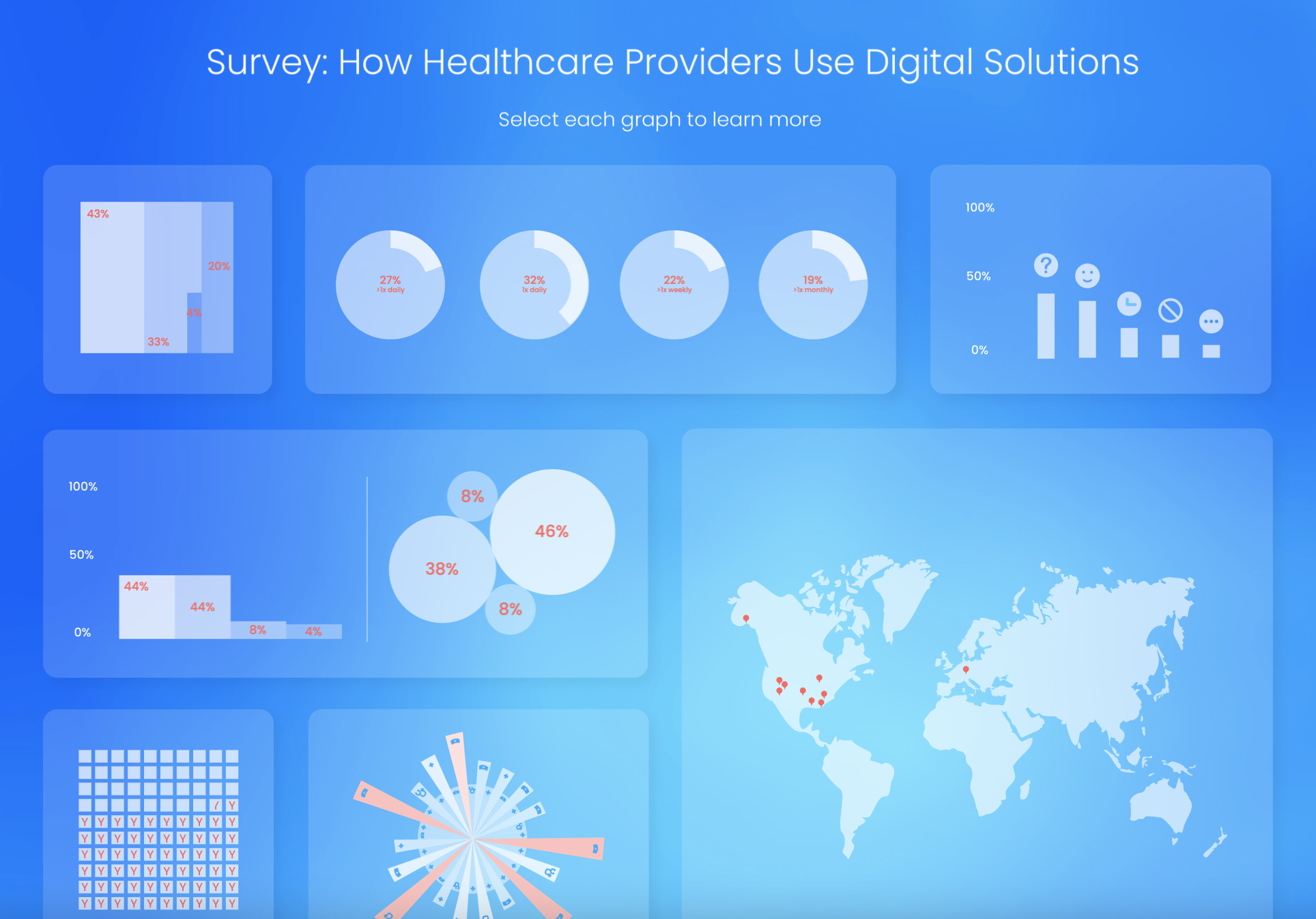
Research
We began the research phase of this project by completing a review of
current Telehealth research. As existing literature focuses primarily
on provider acceptance of the use of Telehealth in medical practice,
exploratory research to pinpoint user issues experienced by both the
provider and the patient was needed.
After speaking with faculty advisors from the Digital Media and Public
and Community Health departments, we came up with these questions to
guide and focus research tasks:
- What does a provider need to comfortably take care of patients remotely?
- How are current digital solutions meeting or not meeting provider needs?
- What gaps in patient care need to be filled?
One of the issues that was discussed in the early stages of this research is poor Internet connectivity. Developing a medical resource app that would be available offline was considered. In an audit of current medical resource technology, however, 16 apps with user reviews of four stars or higher were identified, seven of which are available offline. We refocused our research activities on how to improve existing digital solutions.
In a review of the literature regarding design research methodologies, two concepts were emphasized repeatedly by UX researchers: the importance of variety in obtaining valid results and the use of research as a tool to fuel the design process. Instead of designing a perfect quantitative study with a large N, researching a diverse set of circumstances can save time, be cost-effective, and deliver useful insights. Sample size is important; however, a large sample of very similar participants may produce results that are not representative of the target audience as a whole. For results that are externally valid, a diverse set of users and conditions should be tested.
Since time is frequently a limitation, designing a perfect study may not be feasible. Researchers from the Nielsen Norman Group, a premier resource in UX research and design, say that it is most important to start somewhere and keep learning. Research activities should be planned and executed to inform the next step in the design process.
Methods
For a more accurate analysis of the Telehealth provider experience, quantitative
and qualitative user research methods were utilized. To first identify, and then
quantify provider user experience issues, we created a 10-question, multiple choice
survey using the Qualtrics platform. This survey was designed to be taken by providers
in approximately two minutes. Question topics included how digital solutions are used
by providers in daily practice and what issues are encountered during digital solutions
usage.
The survey link was sent to twenty healthcare clinics and a teletherapy organization,
all located within the United States—one respondent was located in Europe.
Additionally, the survey was advertised on the personal social media channels of the
researchers. No incentive was offered for completion of the survey.
User interviews were utilized to gather qualitative data. The final question of the
survey asked providers to share their email address if they would be willing to answer
additional questions regarding their Telehealth user experience. The SignUp Genius
platform was used to schedule interview time slots. Providers were invited in an email
to sign up for a 30-minute remote interview which would take place on Zoom. Interview
invitations included a digital recording release form.
Interview questions were designed to probe for the underlying cause of Telehealth user
experience issues without leading the interviewee to give expected answers. Providers
were asked to identify which user experience issue had the greatest impact on their
ability to provide medical care. Additional questions asked providers to describe the
functionality of digital solutions given an ideal world. A script was used to standardize
each interview and to avoid variations in interview questions that may have biased the
responses.
Results
49 clinicians in 17 different medical professions completed the survey. Of the 49 respondents, 58.5 percent utilize a digital solution to find information regarding best practice at least once per day. 26.8 percent of the survey sample uses digital solutions for this purpose multiple times per day.
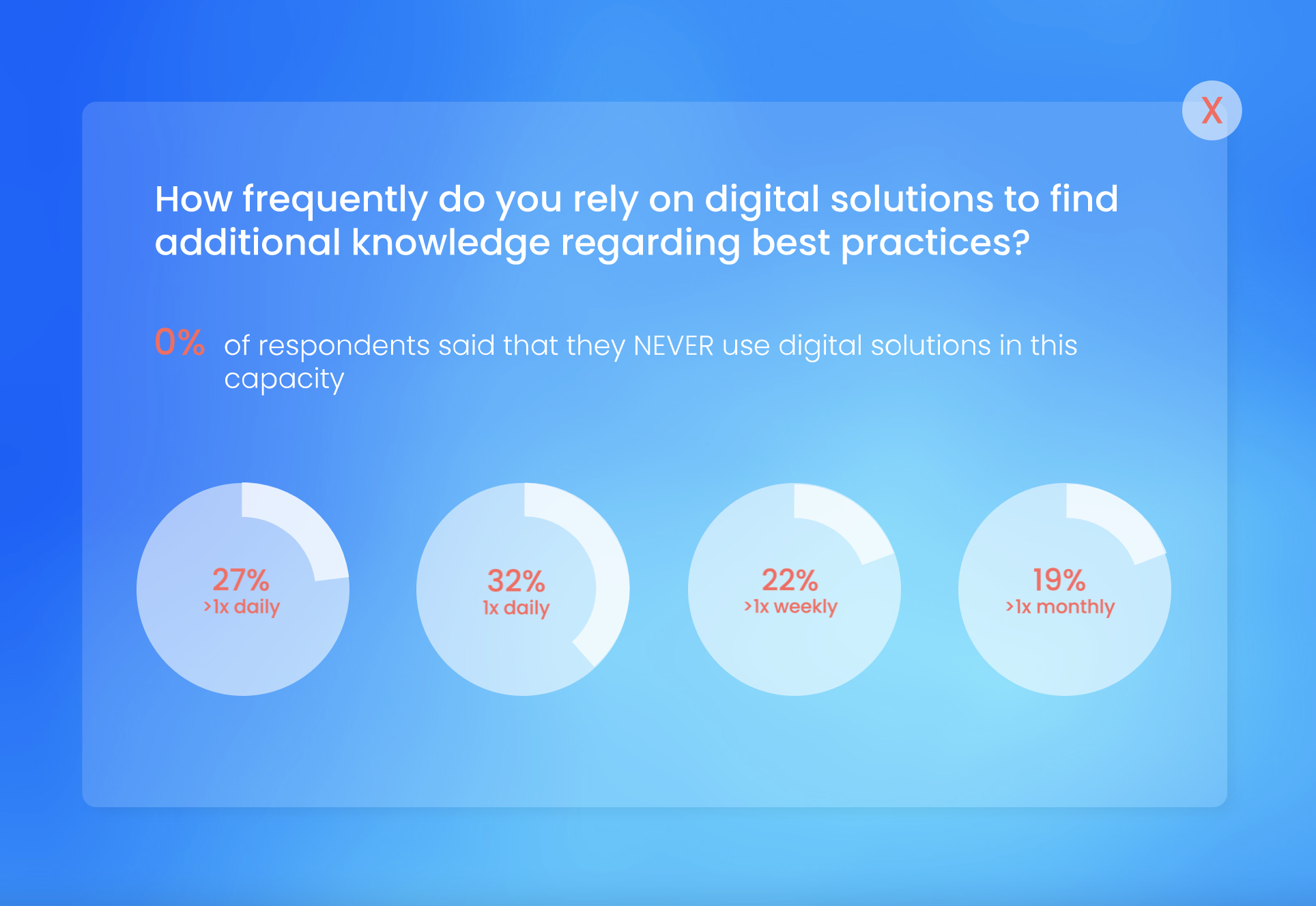
The frequency in use of digital solutions as a resource for medical information was not surprising. However, lack of Internet connectivity or a digital solution “not working” occurred within our sample population less frequently than was expected. Issues were experienced only several times per month by 43.9 percent of our sample. Another 43.9 percent never experienced these issues.
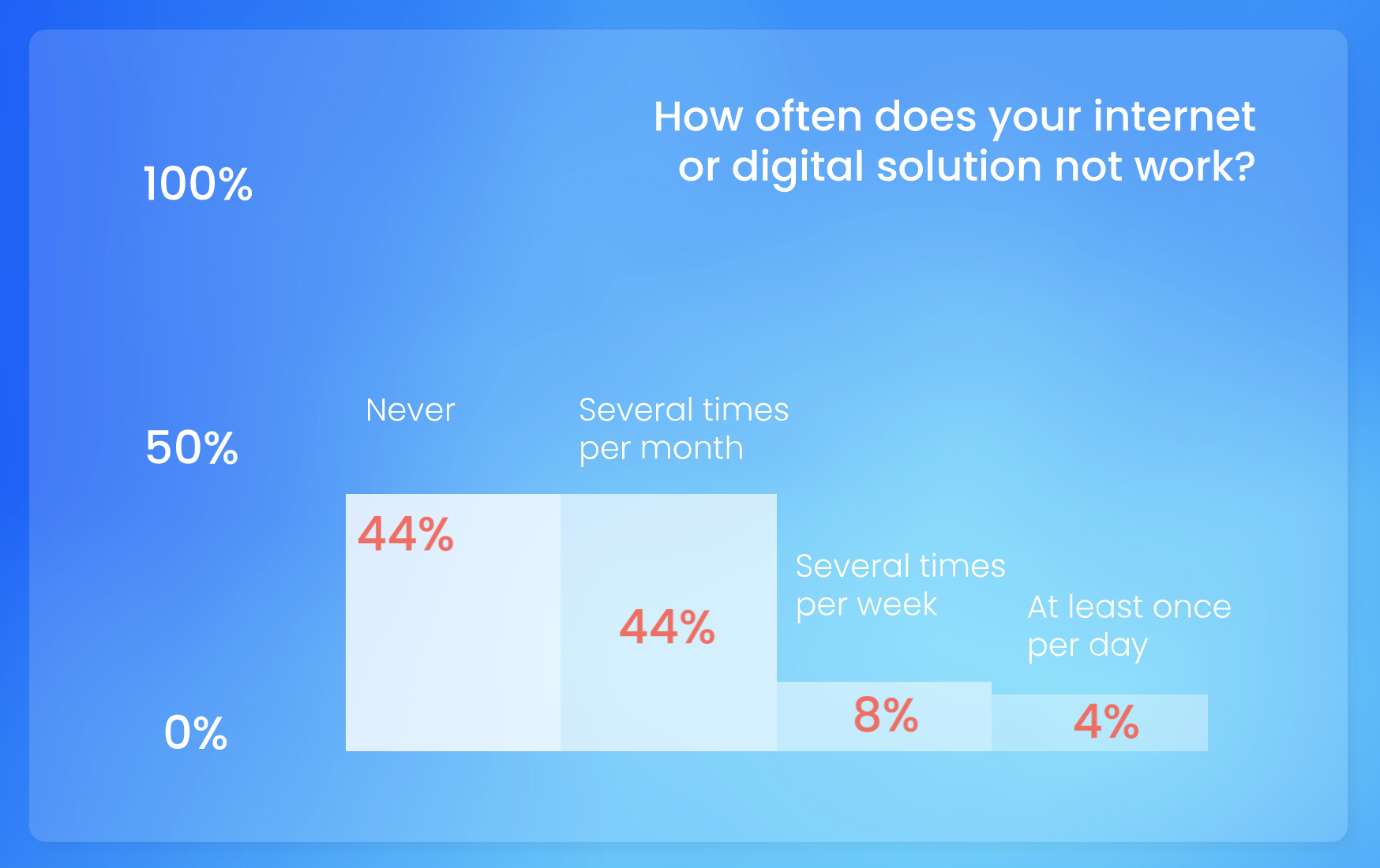
Although these issues were experienced relatively infrequently, 61 percent of our respondents indicated that their ability to provide care was impacted when their Internet or digital solution was not working.
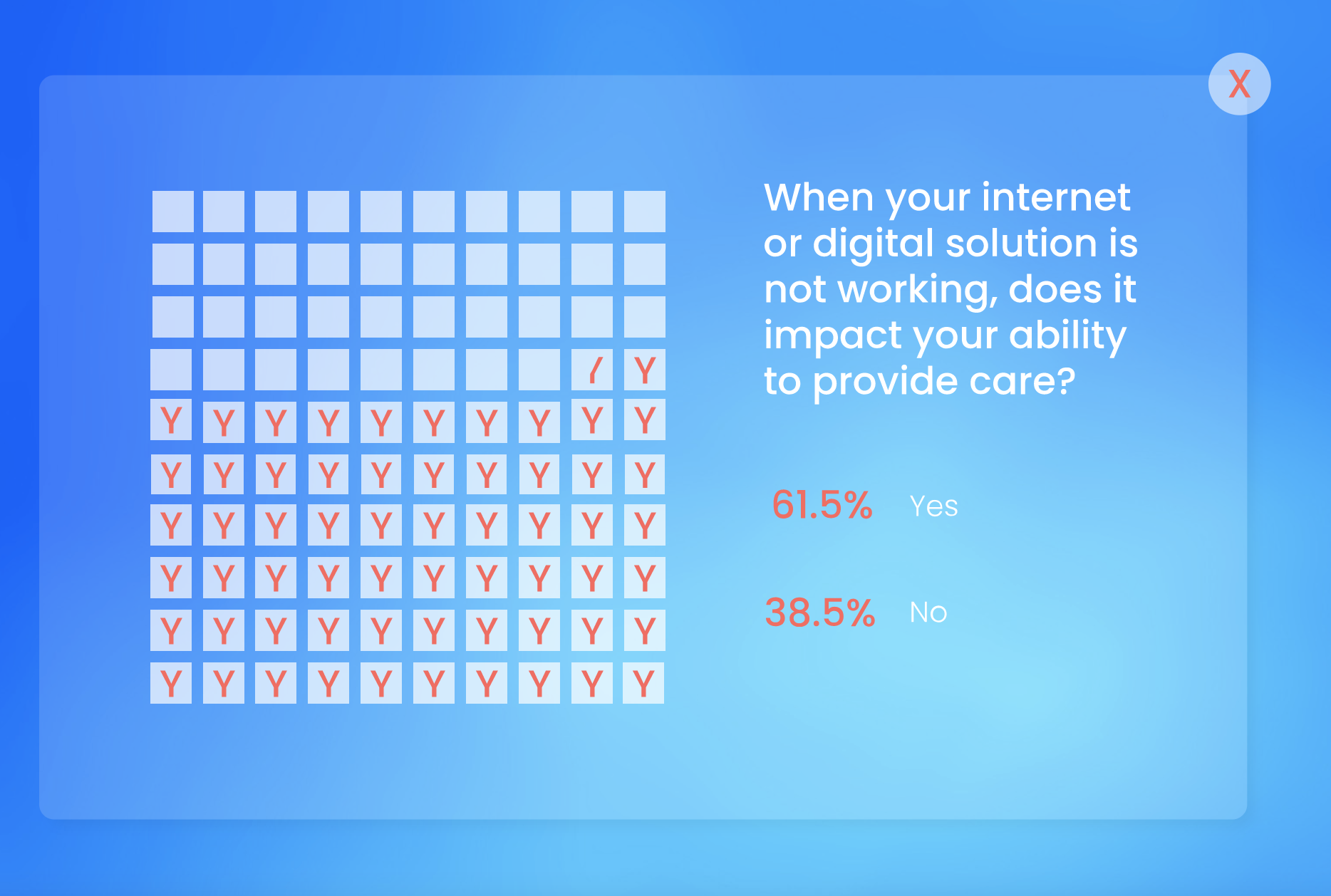
Additional issues were experienced as providers navigated the UI of their digital solution. 34 percent of our sample stated that their digital solution was difficult to use or navigate.
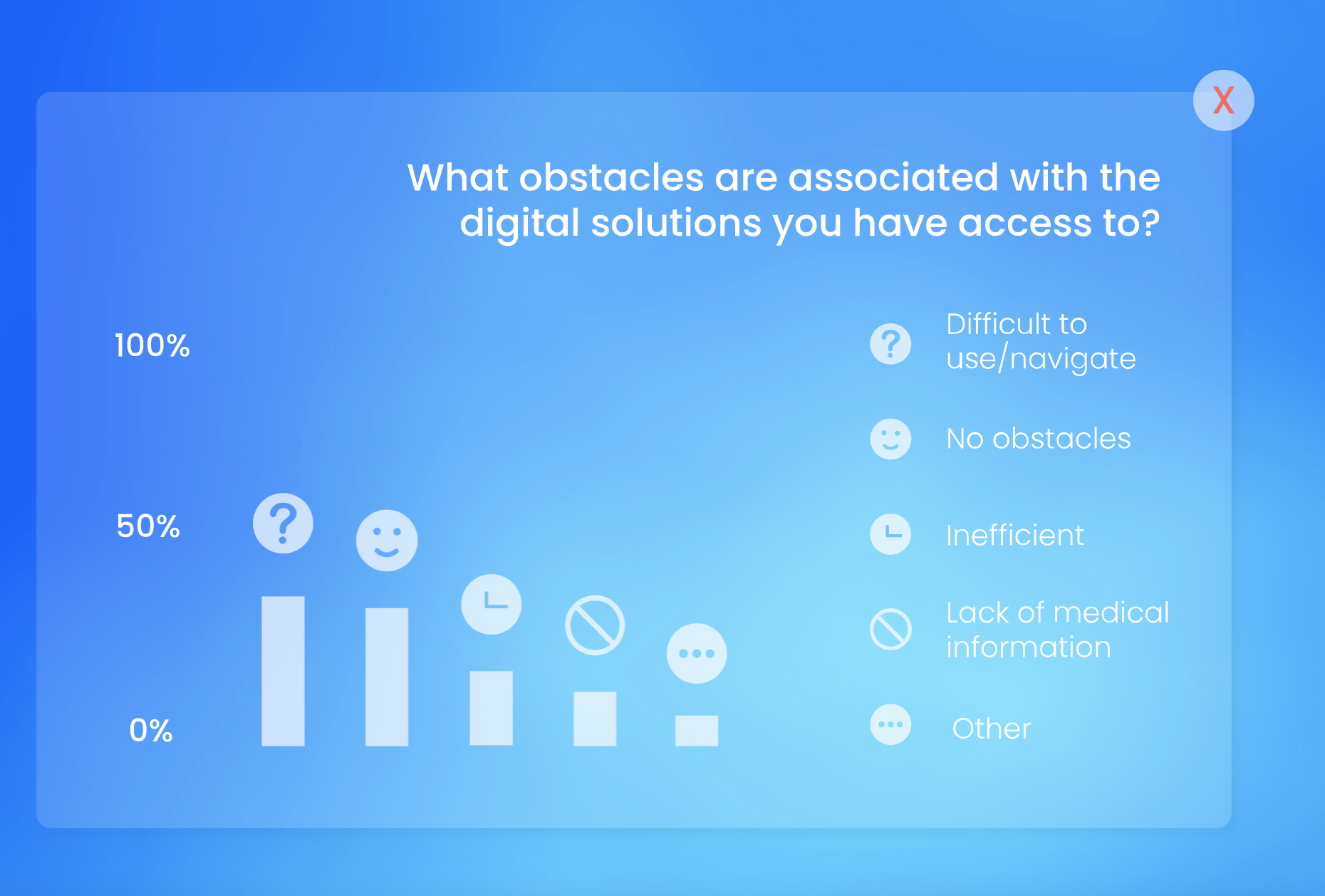
View an interactive infographic of the survey results.
One of the proponents of user experience research is that three to five percent of
participants in a usability study identify 85 percent of the usability issues. Of
the 49 respondents, 88 percent were willing to participate in a user experience
interview, however, only six providers responded to our interview invites. Interviews
were conducted with each of the six providers who practice in the following care areas:
nursing and nurse education, speech therapy, psychology, respiratory therapy, and certified
nurse midwifery.
Although technical issues such as Internet
connectivity were less frequent than expected,
user experience issues were noted by each
provider during their interview. Three of the
user experience problems mentioned in the
interviews were identified by providers as having
a significant impact on their ability to provide
care: difficulty with patient onboarding to
Telehealth technology, searchability or navigation
of digital solutions, and issues with charting,
such as a non-intuitive user interface in the
charting platform.
Next Steps
This research did not focus on the patient
user experience or how issues experienced by
providers impact patient outcomes. Research that
explores the patient user experience and patient
outcomes is essential to prioritize the significance
of user experience issues and to guide future
research and design decisions. Direct observation of
user behavior in a field study may be useful in
avoiding response biases.
Four provider personas were
created as a tool for future researchers. After
exploratory research based on the patient user
experience is completed, patient personas should
be utilized to guide the design process. Proposed
solutions of a chatbot and/or voicebot, and voice-enabled
search and charting will need to be re-evaluated based
on the results of patient user research.
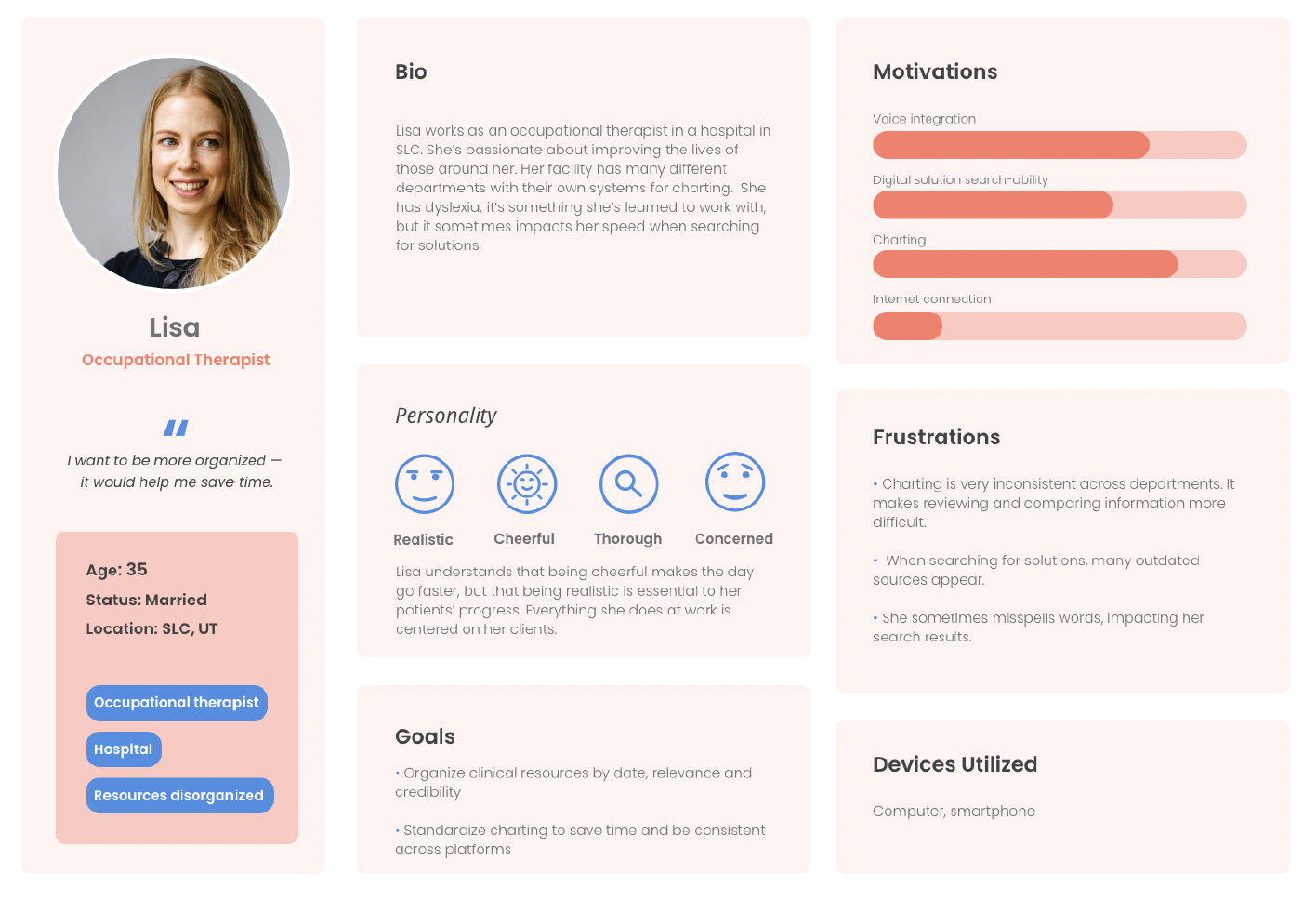
Once research is completed, the design process should include testing of both low- and high-fidelity prototypes before building the design. User testing of prototypes is essential to evaluate the validity of design decisions. After the design is built, the final step in the design process should include user testing to identify any user experience issues.
Lessons Learned
The user experience design process should be cyclical. As technology and user needs evolve, additional research and user testing should be completed. With a multitude of tools and resources available, designers are well-equipped to keep pace with the rapidly changing Telehealth industry.
Deliverables
Academic research report
Interactive infographic